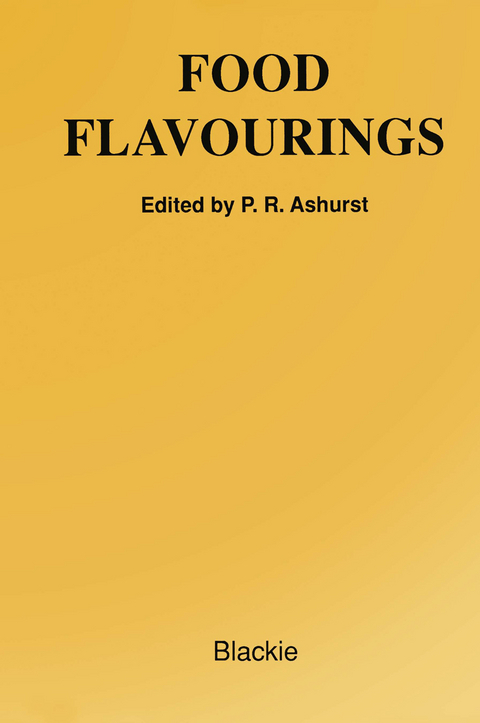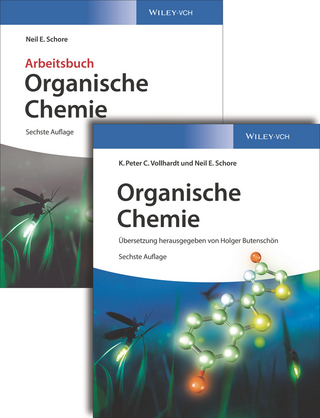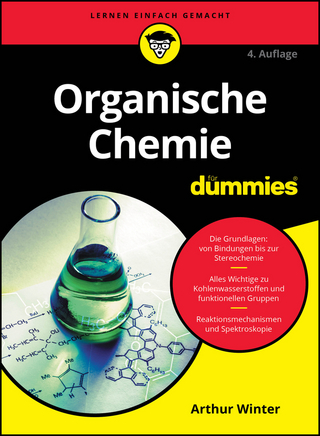
Food Flavourings
Springer-Verlag New York Inc.
978-1-4612-7838-2 (ISBN)
The flavour industry has become a vital element in the growth and success of food and beverage industries worldwide. The development of many new products is now directly related to the use of the appropriate flavouring which, among other benefits, has allowed the use of many novel raw materials. The phenomenal growth of specialised consumer products offering special tastes, nutritional benefits or 'convenience' almost always directly involves the use of a bespoke flavouring. With recent growth in worldwide concern for environmental issues has come a corresponding concern for the use of 'natural' ingredients in foods. The flavour industry has been closely involved, by offering many of its products as natural alternatives, although the vexed issue of what 'natural' means has promoted discussion and debate in many quarters. The European Flavouring Directive has attempted to incorporate a definition. This is discussed further in chapter 1. The work of the flavourist remains akin to that of the perfumer, despite inroads made by sophisticated analytical technology. For example, use of linked gas chromatography-mass spectrometry (GC-MS) instrumentation enables the skilled analyst to identify most components of a competitor's flavouring or the minor ingredients of a natural extract. Despite this, the industry remains a unique blend of art, science and technology in which the experience and knowledge of the flavourist is vital.
1 Introduction.- 1.1 General Introduction.- 1.2 Markets.- 1.3 Products.- 1.4 Emerging Opportunities.- 1.5 The Future.- 1.6 Legislation.- 1.7 The European Flavour Directive.- 1.8 Council Decision.- 2 Essential Oils.- 2.1 Introduction.- 2.2 The Production of Essential Oils.- 2.3 Further Processing of Essential Oils.- 2.4 The Uses of Essential Oils.- 2.5 The Composition of Essential Oils.- 3 Oleoresins, Tinctures and Extracts.- 3.1 Introduction.- 3.2 Plant Materials.- 3.3 Solvents.- 3.4 Tinctures.- 3.5 Oleoresins.- 3.6 Absolutes.- 3.7 Extraction with Carbon Dioxide as a Solvent.- 3.8 Summary.- 4 Fruit Juices.- 4.1 Introduction.- 4.2 Fruit Processing.- 4.3 Specialised Fruit Processing.- 4.4 Products and Packaging.- 4.5 Product Specifications.- 4.6 Volatile Components of Fruit Juices.- 4.7 The Uses of Fruit Juices in Flavourings.- 4.8 Summary.- 5 Synthetic Ingredients of Food Flavourings.- 5.1 General Aspects.- 5.2 Synthetic Flavouring Ingredients.- 5.3 Synthetic Flavour Ingredients and the Future.- 6 Beverage Flavourings and Their Applications.- 6.1 Introduction.- 6.2 Categories of Beverages.- 6.3 Types of Flavourings for Beverages.- 6.4 Methods of Extraction, Solubilisation and Concentration of Flavourings.- 6.5 Beverages Based on Ginger.- 6.6 Formulation of Beverages.- 6.7 Summary.- 7 The Flavouring of Confectionery.- 7.1 Introduction.- 7.2 Basic Confectionery Types, Recipes, Inherent Flavours.- 7.3 Flavours from Ingredients.- 7.4 Flavours Developed During Processing.- 7.5 Selection of Flavourings.- 8 Flavourings for Bakery and General Use.- 8.1 Ingredients.- 8.2 Bakery Products.- 8.3 Bakery Fillings.- 8.4 Summary of Flavouring Characteristics.- 9 Dairy Flavourings.- 9.1 Introduction.- 9.2 Milk and Cream.- 9.3 Yogurt and Fermented Products.- 9.4 Butter.- 9.5 Cheese.- 9.6Manufacturing Considerations.- 9.7 Conclusion.- 10 Process Flavourings.- 10.1 Introduction.- 10.2 Research into Beef Flavour.- 10.3 Creating a Process Flavouring.- 10.4 Applications of Process Flavourings.- 10.5 The Safety Question.- 10.6 Process Flavourings and the Future.- Appendices.- Appendix I: Composition of Lemon and Orange Oils.- Appendix II: Botanical Classification of Fruits.- Appendix III: I.O.F.I. Guidelines for the Production and Labelling of Process Flavourings.- References.
| Erscheint lt. Verlag | 1.10.2011 |
|---|---|
| Zusatzinfo | XIV, 310 p. |
| Verlagsort | New York, NY |
| Sprache | englisch |
| Maße | 152 x 229 mm |
| Themenwelt | Naturwissenschaften ► Chemie ► Organische Chemie |
| Naturwissenschaften ► Chemie ► Technische Chemie | |
| Technik ► Lebensmitteltechnologie | |
| ISBN-10 | 1-4612-7838-4 / 1461278384 |
| ISBN-13 | 978-1-4612-7838-2 / 9781461278382 |
| Zustand | Neuware |
| Haben Sie eine Frage zum Produkt? |
aus dem Bereich


